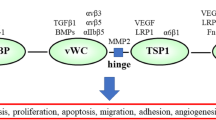Abstract.
Cytokines may regulate cell proliferation by cell-cycle-regulatory proteins, in which cyclin-dependent kinase inhibitors (CDKI) inhibit cell proliferation. We investigated whether CDKI p21 or p27, both of which are potentially regulated by transforming growth factor (TGF)-β, a key cytokine in fibrogenesis, are involved together with TGF-β and/or platelet-derived growth factor (PDGF) in the fibrous progression of glomerular crescent formation and examined the sequential change in the cell type and the cellular background of myofibroblasts in crescent formation. Crescentic glomerulonephritis (GN) was induced by i.v. injection of rabbit anti-rat glomerular basement membrane antiserum in WKY rats. Animals were killed 1, 2, 3 and 4 weeks after the induction of GN, and their kidneys were processed for immunohistochemical examination. After 1 week more than 85% of glomeruli showed cellular crescents, which became fibrocellular with decreased cellularity by 4 weeks. ED 1-positive macrophages were components of crescent cells in about 44% at 1–2 weeks, and this proportion declined markedly afterwards. Alpha smooth muscle actin (alpha SMA, a marker for myofibroblasts)-positive cells were found in Bowman's epithelial cells (BEP) and in some crescent cells at 1 week, becoming major components of crescent cells by 4 weeks (about 40%). It was 2 weeks before invasion of alpha SMA-positive interstitial cells into glomeruli was evident. PDGF-B and PDGF receptor β-positive cells, indicating possible targets for PDGF, were found in BEP adjoining crescent formation almost exclusively from 1 to 2 weeks. By contrast, both TGF-β receptor types I- and II-positive cells, indicating possible effectors for TGF-β, were found in BEP and crescent formation, and the percentage of these in the crescent formation did not change until 4 weeks (about 32%). Cells with positive immunostaining for proliferating cell nuclear antigen and cyclin A, markers for cell proliferation, in the crescent formation peaked in number and proportion at 1–2 weeks, then decreased. In contrast, cells with positive immunostaining for p21 and p27, CDKI, were sparse at 1 week, and then increased markedly in number and in proportion, peaking at 3 (39.6%) or 2–3 weeks (about 25–30%), respectively. The present study demonstrates that restrained expression or a transient increase in p21 and p27 may be associated with proliferation or with inhibited proliferation of crescent cells, most of which are macrophages and myofibroblasts. The action of PDGF and TGF-β may contribute to the recruitment of myofibroblasts into the crescent. The action of TGF-β on crescent cells might be linked to the expression of p21 and/or p27.
Similar content being viewed by others
Author information
Authors and Affiliations
Rights and permissions
About this article
Cite this article
Fujigaki, Y., Sun, D., Fujimoto, T. et al. Cytokines and cell cycle regulation in the fibrous progression of crescent formation in antiglomerular basement membrane nephritis of WKY rats. Virchows Arch 439, 35–45 (2001). https://doi.org/10.1007/s004280100433
Received:
Accepted:
Published:
Issue Date:
DOI: https://doi.org/10.1007/s004280100433




